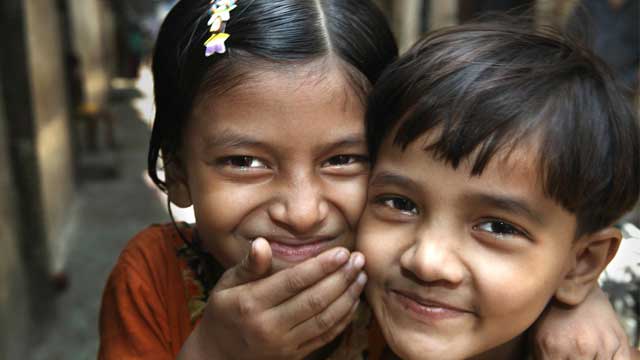Bangladesh has successfully reduced child death rates in South Asia as the country’s child mortality rate—for children under the age of five —decreased by 63% in the last 20 years.
Bhutan experienced a 60% reduction, Nepal 59%, and India 57% during the same period.
“Bangladesh has cut its child mortality for children under the age by 63% since 2000, and by 77% since 1990; while the country is expected to reach the global target of 25 or fewer deaths per 1,000 births in years before the 2030 deadline of Sustainable Development goals (SDGs),” reads the Global Childhood Report 2019 of Save the Children published recently.
In 1990, the WHO Global Health Observatory data said 532,000 child deaths occurred in Bangladesh, and that has now been cut to around 100,000 annually, reports BSS.
Save the Children lauded the Bangladesh government’s efforts in setting up community clinics and bringing the primary health care system under digitization to improving children’s health.
The report detailed that In Bangladesh, investments are being focused on strengthening healthcare systems plus introducing and scaling up proven solutions for mothers, children, and newborns.
“Progress has been equitable – benefiting poor and rich, girls and boys, and also rural and urban children. Targeted, well-designed and equity-oriented programs have achieved high immunization coverage and high rates of treatment of diarrhea and pneumonia in Bangladesh,” it added.
Identifying women’s and girl’s education plus empowerment as key factors for progress in Bangladesh, the report said Bangladesh has also engaged its civil society—including children and young people—in setting public policy priorities and influencing budget allocations.
Bangladesh launched the National Newborn Health Program to further reduce deaths for children under the age of five. The new initiative focuses on scaling up a package of evidence-based interventions in each of the country’s 64 districts.
In her message marking Safe Motherhood Day 2019, on May 28, Prime Minister Sheikh Hasina said the development of maternal and child health is an indispensable part of national development.
She said her government has introduced a three-year midwifery course to ensure safe deliveries and motherhood.
“We have big challenges ahead to reduce the maternal mortality ratio to less than 70 deaths per 100,000 live births—and reduce newborn mortality to 12 per 1,000 live births—by 2030 to attain the Sustainable Development Goals [SDGs],” she said.
To meet the challenges, the premier said the Health and Family Welfare Ministry is working to implement fourth health sector programs—between 2017 and 2022—in light with the national seventh five-year plan and Vision 2021.
The head of Pediatric Department of the Institute of Child and Mother Health in Dhaka, Professor Wahida Khanom, said community clinics are playing an important role in reducing the death rates of newborn babies across the country.
“Earlier, people did not know where they could get healthcare for newborn babies. Now, rural people are easily able to receive the services from community clinics,” she said.
The initiatives of community clinics—one for every 6,000 people—became the engine of Bangladesh’s primary health care service that has been praised worldwide.
Additionally, she said that child and mother healthcare services have improved at union sub centres, upazila health complexes, and satellite clinics.
However, pneumonia still remains the leading cause of death among children below the age of five as two children die of pneumonia, every hour, in Bangladesh.
Around 16% of the deaths of children aged below five years are caused by pneumonia, according to the National Situation Analysis Report of Pneumonia 2018.





